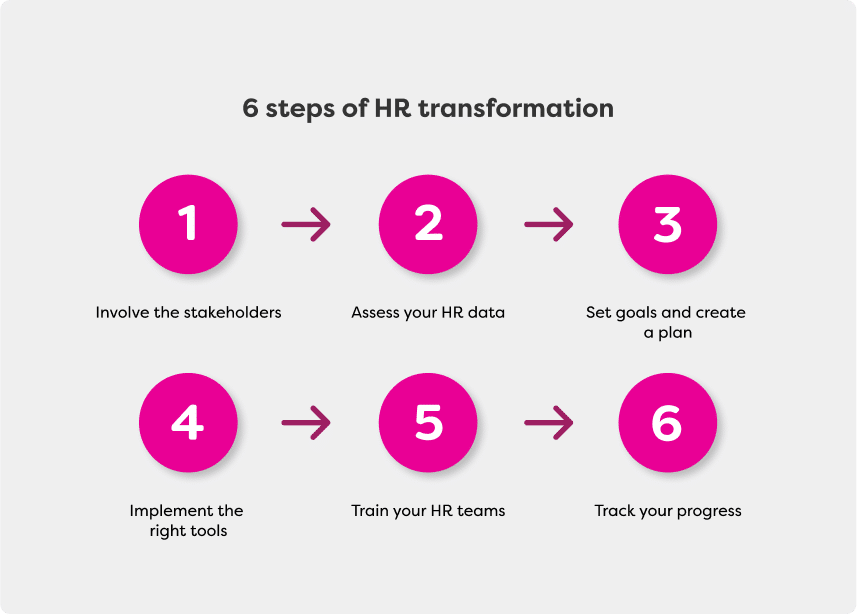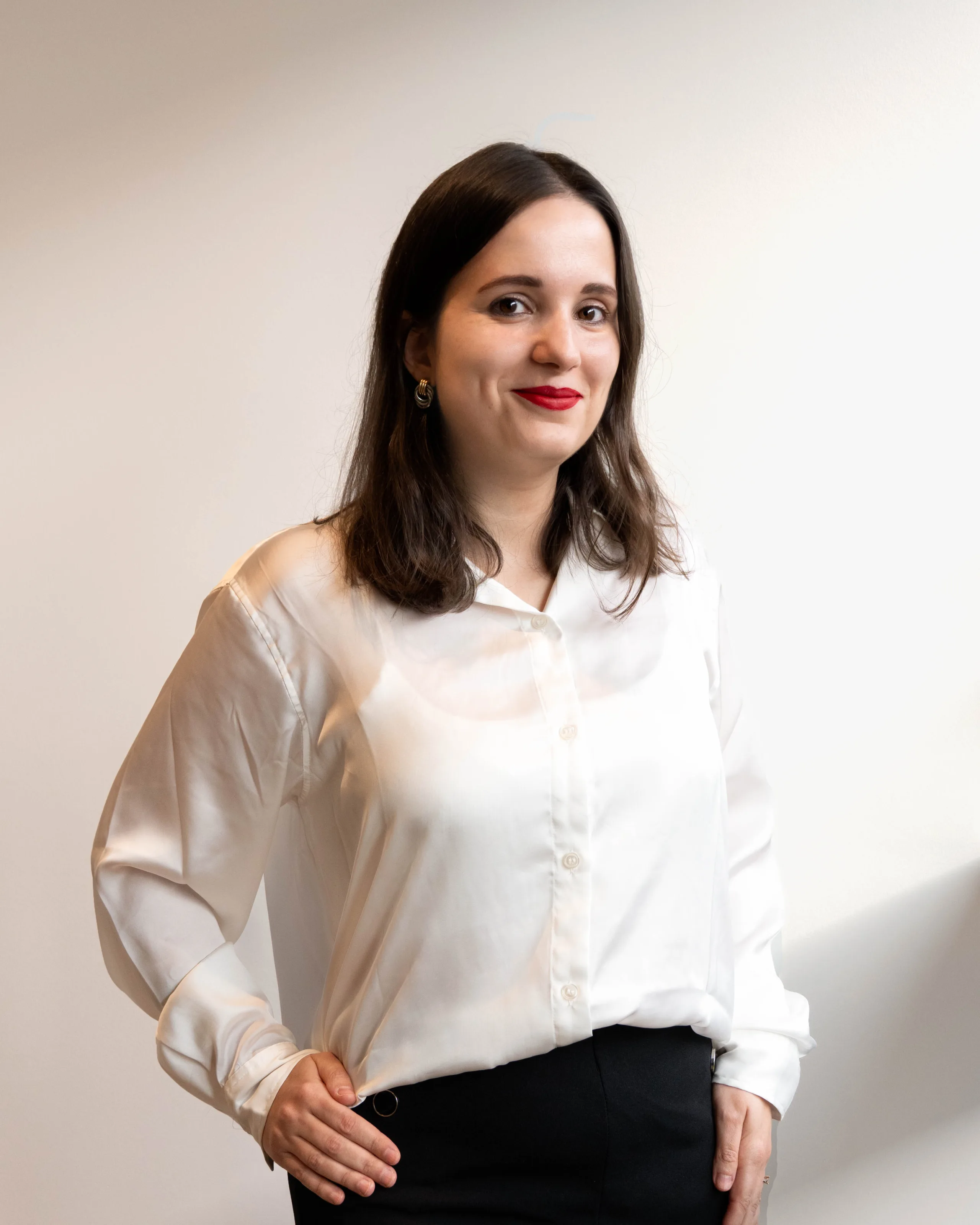If you are an HR professional, chances are you have heard about a lot of different trends and shifts in the HR function. The pandemic, HR technology and the digital transformation are examples of changes that HR leaders have had to adapt to over the past few years.
One of this trend, however, involves profoundly rethinking HR’s role in every organization: human resource transformation is more than a buzzword and represents the future of employee management. Read on to discover what HR transformation is, its components and benefits, and how to achieve a successful HR transformation process in your company.
What is HR Transformation?
HR transformation refers to the evolution of the HR operating model towards a more strategic and effective role that directly impacts business performance. It entails not only the implementation of efficient HR technology, but also service delivery and people analytics. The goal is to align HR strategy and business strategy for more impactful talent management.
An effective HR transformation strategy can be a huge competitive advantage and makes all the difference to reach your strategic objectives.
Benefits of HR Transformation
Increased Efficiency
By achieving HR transformation, HR departments are able to streamline their practices and keep track of action plans, which means they can gain time and efficiency on every single HR process.
Clearly-defined goals and policies enable HR pros to know exactly what to do, how to do it, and when to do it, and appropriate technology tools are used to ensure that HR strategies are well enacted across the organization.

Cost Savings
An effective transformation allows companies to save on HR operations costs, as it aims to save time spent on various tasks while gaining efficiency and visibility on the impact of each project. HR leaders will spend less time on low-value tasks and focus on strategic initiatives that directly influence business outcomes.
Enhanced Strategic Focus
Beyond administrative tasks and daily employee management, HR transformation ensures that HR managers reach their full strategic potential and actively participate in organizational goals. Their new role will consist in strategic workforce planning, analyzing data and creating effective plans to improve employee performance.
Improved Employee Engagement and Productivity
Strategic visibility helps HR professionals know where they need to focus their energy in order to improve employee engagement and daily productivity.
For instance, if HR data shows that employees are losing motivation because of heavy workloads, the HR department can build plans to solve the issue before it goes out of hand. HR transformation aims to create action plans that positively impact productivity and engagement in the workplace.
Better Employee Experience
Working strategically on each step of the employee lifecycle means that your teams will benefit from improved employee experience and an healthier work environment. Considering that human capital is one of your organization’s biggest asset, HR transformation will help you make the most of the talent your company comprises.
Adaptation to Organizational Change
HR transformation is also the best way HR staff can be prepared to face potential organizational changes, as it consists in implementing flexible practices and tools to ensure that you always have a proactive vision and anticipate talent strategy according to business needs. It also helps adapting to different work models such as hybrid or remote work so that talent management and strategy is never an issue, no matter the context.
The 4 Components of HR Transformation
1. Integrating HR Technology
Every HR transformation requires technology integration and automation. Here are exemples of HR technology you can implement:
- HRIS (Human Resources Information System): these solutions centralize HR data such as employee profiles and automate various HR processes such as onboarding, performance management and time-tracking.
- ATS (Applicant Tracking System): these tools streamline talent acquisition and centralize candidate information. Some of them even include AI features to gain time and efficiency on your recruitment practices.
- Artificial Intelligence: generative AI and other Artificial Intelligence tools can be game-changers to customize employee experience and drive your HR transformation efforts.
- Analytics and Data-driven Decision Making: using HR KPIs (Key Performance Indicators) is essential to track metrics such as employee retention and notice potential issues and gaps before they get out of hand.
2. Improving HR Capabilities
Re-imagining HR leadership implies redefining competencies, capabilities and scopes of action. HR leaders need to be involved in organizational strategies and their action plans have to be central in the achievement of business goals.
Not only do the HR team and employees need to accept and handle this transformation, but the organization also has to create new policies and change management plans to integrate this new work model.
3. Redefining HR Processes
All your core HR processes need to be aligned with and support your business goals. For instance, recruiting needs to focus on acquiring the most relevant profiles and competencies to reach business success. Onboarding plans should be focused on future retention and effective training so that new hires can be motivated and productive more quickly. Similarly, performance management and learning and development programs must be a ladder that helps you reach your strategic objectives.
In short, every single HR process needs to be redefined with business goals in mind so that the HR department becomes a key strategic partner in the company.
4. Enhancing Employee Experience
Of course, HR’s role is not redefined only to support the organization, and employee experience needs to remain at the center of their transformation. HR leaders should strive to place employee engagement strategies and well-being programs at the core of their strategy. The goal here is to create an inclusive work culture where everyone can reach their full potential.
6 Steps to Achieve Your HR Transformation
1. Involve the different stakeholders
The first step in your transformation is to convince and involve the different stakeholders in your company to ensure that everyone is on board. Present the benefits of your project and a general roadmap of the plans you want to implement.
Of course, you should communicate with other actors in the organization throughout the entire process, to adjust strategies, present data and results, but discussing with business leaders from the beginning ensures that you have the green light to invest time, money and energy on your HR transformation project.
2. Assess your existing HR data
Even if you have not yet transformed the HR’s role, you already have valuable data and insights that you can use to build your project roadmap.
For instance, you can calculate your past turnover and retention rates, employee productivity, absenteeism and other KPIs so that you know which aspect you should prioritize in your strategy. This data should be shared and contextualized during your presentation to executives so that you can pinpoint strategic issues you can work on in your organization. Using Beautiful AI alternatives, you can create visually compelling charts and slides that make these insights easier to understand and more engaging for your audience.
3. Set goals and create a plan according to your business needs
Now that you have collected the available data and analyzed it thoroughly, it is time to set strategic objectives that align with business needs. Your transformation should be built around key targets and you need to know how each of your action will contribute to business goals.
Of course, your plan can be adjusted over time if you notice a new issue that requires your attention of if you manage to reach a target before the deadline. Be proactive and think strategically so that you get the most strategic value out of your HR transformation.
4. Implement the right technology
In order to be strategic, HR leaders need to use the right tools. We have previously mentioned HR software, AI solutions and ATS as essential platforms to gain strategic insights and redefine HR processes.
If you have not yet invested in a comprehensive set of HR technology tools for your organization, now is the time to start your research and to choose a solution adapted to your organizational reality and business needs. Depending on your company’s size, business model and industry, there are different criteria you need to consider.
Click here to discover a list of the best HR software solutions for SMBs!
5. Train and support your HR teams
The HR department needs to be continuously trained and supported throughout this change so that it has the knowledge and means to achieve a successful transformation.
If your HR teams are not used to manage more strategic plans and struggle to use the new tools you implemented, you need to build upskilling plans so that they can learn to adapt and thrive in this new role. You can build policies and documentation they can refer to when they have a question or concern, and organize regular training sessions so everyone stays on the right track.
6. Continuously track your metrics and progress
To ensure that you have achieved a successful HR transformation, you need to check your progress by tracking the metrics and insights you have set up. Progress tracking should be ongoing so that you can adjust your strategies if needed and present results to stakeholders. This will help you be proactive and flexible.
Throughout the transformation, don’t forget to check how your teams are experiencing these changes so that your strategies remain focused not only on human capital, but also on employee well-being.

Over the years, HR transformation initiatives have become essential for companies who want to benefit from effective talent management strategies that align with organizational goals.
Your HR transformation efforts are best supported with flexible HR technology tools that automate data analytics and repetitive employee management processes. Folks HR is a powerful HR platform that helps you streamline performance management, build HR reports, and improve and track the entire employee experience. Discover its features for free today!
Folks HR supports your HR transformation process:
Implement HR technology seamlessly in your company!

